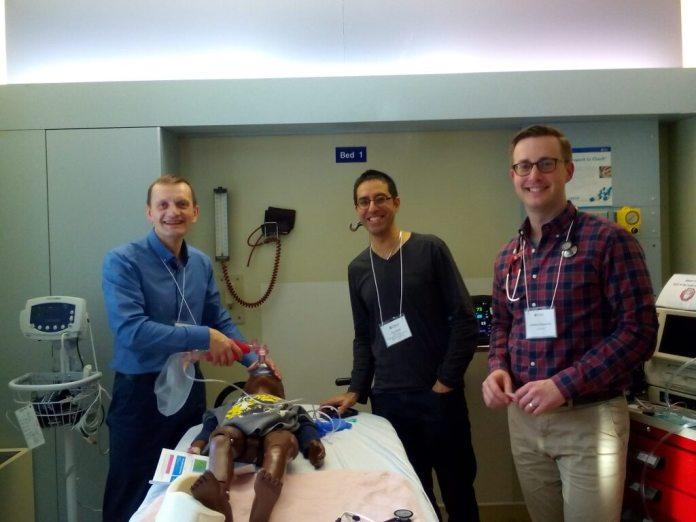By New Pathway -Mar 6, 2018
The Calgary Branch of UCC organized a “Meet and Greet” fellowship on January 22, 2018 for three visiting medical doctors from Ukraine. The meeting was held in the board room of the Assumption of the BVM Ukrainian Catholic Church, who support cultural events. The University of Calgary had just held a 3-day course “Emergency Medicine for Rural Hospitals.” This was the 34th Annual Conference and was held at the Banff Park Lodge. The vision of this course was to provide clinical topics relevant to physicians, nurses and other healthcare professionals who practice in rural communities The Ukrainian Canadian Professional and Business Association (UCPBA) of Calgary co-sponsored this community event.
Bohdan Romaniuk, President of the UCPBA Calgary opened the meeting by welcoming the doctors and shared information about the Canada-Ukraine Foundation (CUF) and its President Victor Hetmanczuk and the phenomenal work that he and the organization is doing with help in Ukraine. The three doctors — Orest Kulenych from Ternopil, Vadym Vus from Rivne and Ihor Zastavnyy from Lviv region, had come to Alberta. Travelling and morally supporting the visitors was Victor Hetmanczuk. CUF has raised millions of dollars in funding for emergency medical assistance to Ukraine, especially to those affected by the war in the Donbas. Both Bohdan Romaniuk, and Victor explained the function of the Canada Ukraine Foundation and how it has been supporting medical help and doctors going to Ukraine to take care of the needs of patients and their families hurt in the war ongoing in Ukraine
Having visited our hospitals in Calgary, the three visiting doctors with amazement in their voices told those present how impressed they were with our Canadian system of healthcare. The availability of buses fitted with medical equipment and supplies that go to rural areas here in Alberta with help to those in need, including our STARS ambulance helicopter service. The sharing of ideas and support of medical staff was another important realization for them. Ukraine’s medical system differs from the Canadian one. The young doctors, and medical students present shared information. For example, the doctors who work in the villages are not allowed to do sutures, they send their patients to hospitals in the nearby cities, yet Danylo a first year medical student at U of C, learned to do them his first day in medical school.
Dr. Semkuley, who with his wife Elaine of Medical Mercy have been going to Ukraine for over 30 years with humanitarian help, compared experiences they had during their visits every May to villages in Western Ukraine and teaching the villagers to help themselves by building and renovating in their villages. Learning how they could improve their facilities on their own, not waiting for the government to help them. It has changed very slowly over the years and sometimes not. Dr. Ihor Zastavnyy mentioned that Ukrainians are starting to understand volunteerism, especially since the Revolution of Dignity and making positive changes by volunteering and organizing volunteer groups.
One of the doctors shared an experience of how it hasn’t changed. While attending to a patient when volunteering for ATO in Eastern Ukraine, a woman from the village learned he was from Western Ukraine and referred to him as Bandera “Banderivets”. She was apprehensive about him caring for her. He, in turn, said let me examine you and then you can judge me. She ended up telling him that she is immediately going to call her friends in Russia and Crimea and tell them that he was normal.
Most rewarding for those of us attending that evening was that we shared our love for Ukraine and wanting Ukraine to have the same level of healthcare that we in Canada are blessed with. In fact, within days Dr. Vadym Vus wrote the following: “Thank you very much for your warm meeting! We are already in our Motherland and it is pleasant to realize that your hearts are open to Ukraine. We will already extend the knowledge, experience and contacts that you have discovered for us. Blessing to your community and waiting to meet with you in Ukraine!” Vadym Vus.










